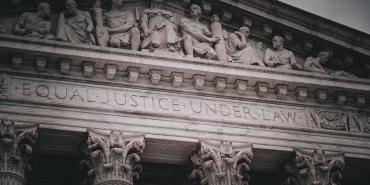The Supreme Court of the United States has voted “no” on affirmative action, making it illegal to consider race in college admissions and reversing decades of practice that has made higher education more accessible to Black, Indigenous and Latinx people. Civil rights activists and advocates for equity in higher education are condemning the decision.
“Make no mistake: Today’s draconian ruling by the Supreme Court is a catastrophic decision that will have dire outcomes for millions of Americans for decades to come,” says AFT President Randi Weingarten. “This decision ignores the original sin of this country—it’s a throwback to a cruel, racist past that admissions policies like this tried to repair. This decision doesn’t simply end affirmative action, it has huge consequences for public life far beyond higher education. Ignoring the facts before them, the majority pretends that both discrimination and the effects of discrimination simply do not exist and do not need to be tackled.”
“Today, this Court stands in the way and rolls back decades of precedent and momentous progress,” wrote Associate Justice Sonia Sotomayor in her dissent. “The Court subverts the constitutional guarantee of equal protection by further entrenching racial inequality in education, the very foundation of our democratic government and pluralistic society.”
“Our country has never been colorblind,” wrote Associate Justice Ketanji Brown Jackson. “Given the lengthy history of state-sponsored race-based preferences in America, to say that anyone is now victimized if a college considers whether that legacy of discrimination has unequally advantaged its applicants fails to acknowledge the well-documented ‘intergenerational transmission of inequality’ that still plagues our citizenry.”
The 237-page decision came down through two cases, centered on two of the oldest schools in the nation: Students for Fair Admissions, Inc. v. President and Fellows of Harvard College and Students for Fair Admissions, Inc. v. University of North Carolina. The decisions were 6-2 in the Harvard case (Jackson recused) and 6-3 in the North Carolina case. The majority stated that the practice of affirmative action is unconstitutional, violating the equal protection clause of the 14th Amendment.
Reversing gains made over decades
Beginning in the late 1960s, some form of affirmative action—which allows consideration of a college applicant’s race as part of an effort to accept more students whose families have been historically excluded from higher education—has made college more accessible to Black, Indigenous and Latinx students. Taking it away would reverse that progress.
California provides a case study: When race-conscious admissions at public universities were banned there in 1996, enrollment of Black students fell by nearly half in the California State University system, and there was a 12 percent drop in underrepresented groups across the University of California system. At UC Berkeley and UCLA, two of the most prestigious colleges in the state, the effect was even greater: Black, Latinx and Indigenous student enrollment dropped by 60 percent. Today, Latinx students are “severely underrepresented” at UC schools, and Native American enrollment is vanishingly low at CSU schools.
It’s not just California: In Michigan, race-conscious admissions were banned in 2006; by 2021, enrollment of Black undergraduates had fallen nearly 50 percent. Meanwhile, race-conscious admissions bans in eight states caused the enrollment of Black, Latinx, Native American and Pacific Islander medical students’ enrollment to fall by 37 percent.
Why we fight for race-conscious admissions
“Institutions of higher learning have a compelling interest in promoting diversity in the ranks of their students, not only to improve the opportunities for students of color but also to enhance the educational experience for all students,” reads an amicus brief submitted by the AFT in support of race-conscious admissions programs. The brief outlines numerous reasons to preserve affirmative action, including:
- Critical thinking and problem-solving are improved when learning takes place among a diverse set of peers, higher GPAs have been linked to greater racial diversity, and learning outcomes for white students actually improve when a classroom is more diverse.
- Higher education is strongly correlated with more desirable jobs and earnings, goals that are especially important to students of color whose families have historically been shut out of colleges and universities and therefore have less access to higher-paying, more rewarding careers.
- Better access to higher education means better access to the professions and less racial stratification in crucial services like teaching and medicine. These professions are in particular need of diversification; having more Black and Latinx professionals translates to better outcomes for Black and Latinx students and patients.
- Diversity in education can address racial tension, hostility and bias at a time in our history when such challenges are particularly troublesome.
Although this case has been decided, advocates of racial equity will continue to use other levers to provide fairer access to higher education, but none have been as effective as affirmative action. Among the possibilities listed by the Urban Institute are class-based affirmative action; automatically admitting the top students in high school graduating classes; targeted recruitment and financial aid; ending legacy admissions, in which the children of alumni get preferential consideration; and test-free or test-optional admissions policies.
“Our fight for justice will continue,” says Weingarten, but the recent decision “is a stain on our nation’s principles that will not be easily reversed.”
[Virginia Myers]

